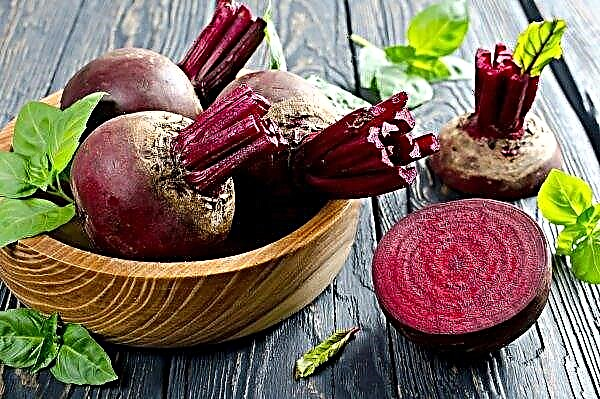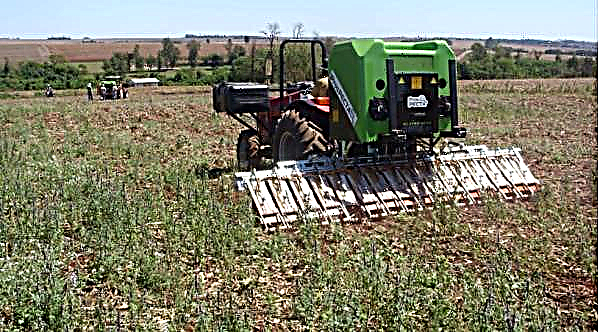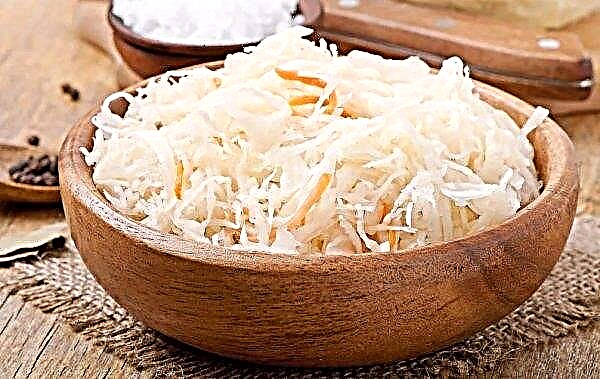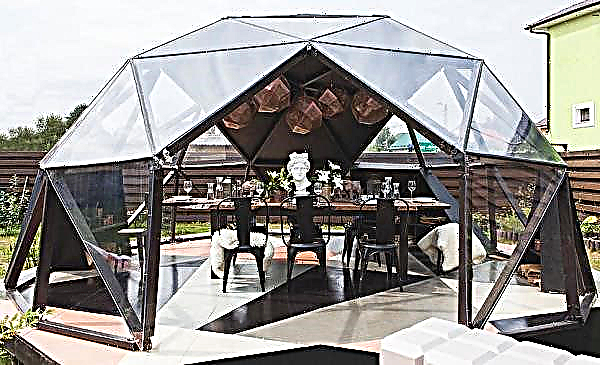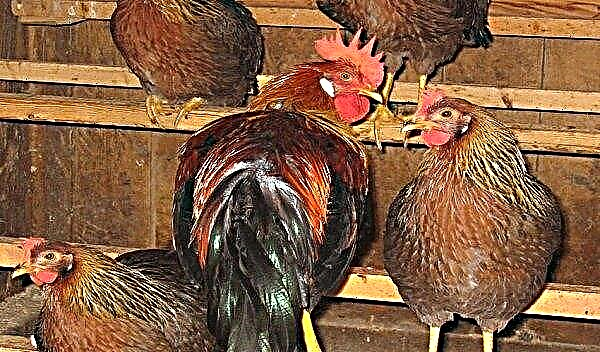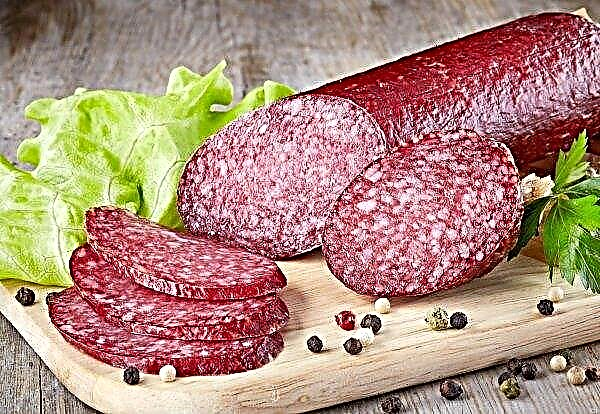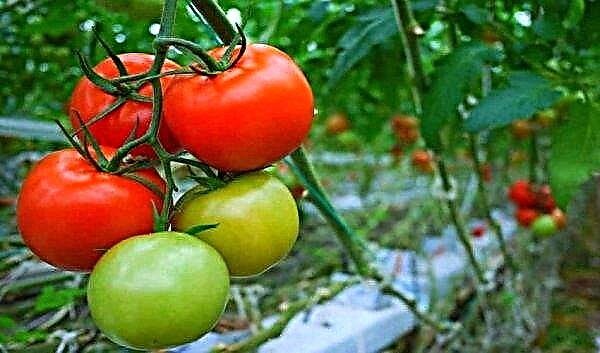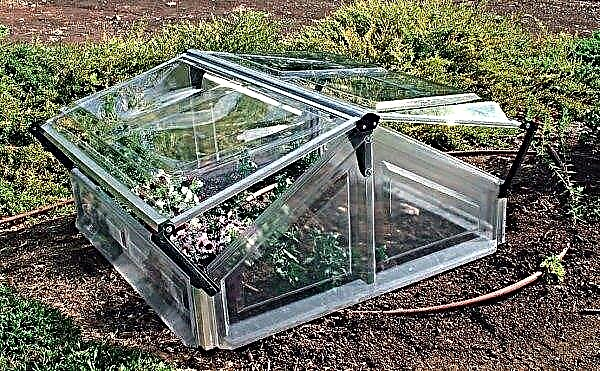Currants are a powerful source of vitamins and healing substances. But the crop can be lost if it is improperly taken care of by the bush, neglected by obvious signs of the disease. Red spots on currant leaves are a dangerous symptom that cannot be ignored.
Causes of red spots on the leaves
No matter how carefully the gardener treats his plants, sometimes you have to deal with unpleasant problems. Fungal infections, dangerous pests, infections can be encountered for reasons beyond the control of humans. Contribute to the development of currant diseases can be increased humidity, as well as adverse temperature conditions.
Often contributes to the defeat of the plant violations of agricultural procedures, untimely or improper care, lack or excess of fertilizers.
 You can avoid trouble if you choose the right care needed for a particular grade of currant. It is important to monitor not only the nutrition of the plant, but also the physical condition of the soil
You can avoid trouble if you choose the right care needed for a particular grade of currant. It is important to monitor not only the nutrition of the plant, but also the physical condition of the soil
Red spots on the leaves of currants are most often the result of two phenomena. This may be a fungal infection of Anthracnose or the effects of aphids. Both problems can lead to crop loss. Therefore, therapy should be carried out immediately. Preventive measures are also of great importance.
Anthracnose
This disease can affect all types of currants. Among summer residents can also be found the name "flycat". The problem is that the fungus that infects the leaves of the shrub is highly resistant. The causative agent survives the winter under the bushes without any problems. Numerous insects can spread it. Increased growth of pathogenic microorganisms provokes moisture. Therefore, the infection most often affects the bushes in the rainy season.

The fact that the plant is affected will be indicated small brown spots on the leaves. Over time, their number increases, the spots grow and merge. If timely therapeutic measures are not taken, the leaves completely dry.
Important! The worst experienced anthracnose is red currant. A few brown spots are enough for the leaves to begin to crumble.
Gall aphid
Insects can cause significant damage to the plant, affecting not only the appearance, but also the yield. Gall aphid is dangerous for currants. Red and white berries are more at risk. Under the influence of insects, unattractive brown tubercles appear on the leaves. At first glance, it may seem that the plant is affected by an infectious disease. But if you turn the leaf over, it becomes clear that bloating is associated with the activity of aphids.
Gall aphid is a pest that sucks juice from currant leaves. Insects live on the plant until mid-July, while the leaves remain tender and juicy. Then the aphid moves to lavender, oregano, sage.
 Insects most often choose growths of the current year with the most tender leaves. This negatively affects the overall yield. After all, the growth of the bush is suspended, the likelihood of a good harvest in the next season is significantly reduced.
Insects most often choose growths of the current year with the most tender leaves. This negatively affects the overall yield. After all, the growth of the bush is suspended, the likelihood of a good harvest in the next season is significantly reduced.
Gall aphids can multiply rapidly, which negatively affects the condition of currants. One individual per season can produce more than a hundred of their kind. Insects feel better at high temperature. Therefore, the higher the temperature in the street, the greater the likelihood of damage to the bush.
Did you know? On earth, there are more than 4,000 species of aphids. Gall aphid is one of the most common.
How to process currants
As soon as red spots appear on the leaves of the currant, you need to start therapy. There is a chance that the bush will be saved and the harvest will be rich. You can use not only chemicals, but also folk remedies.
Chemicals
Anthracnose - a fungal disease. Therefore, the fight against infection must be carried out using fungicides. These are chemical drugs that interfere with biochemical reactions that occur in the cells of fungi. As a result, pathogenic microorganisms cannot fully reproduce and die over time.

The following drugs can be used to combat currant anthracnose:
- "Acrobat MC";
- "Ridomil";
- "Kuproksat";
- "Fundazole";
- Previkur, etc.
Important! Preparations may differ in the way they affect the plant and the hazard class. Before use, be sure to study the instructions.
To combat the gall aphid, a different approach is needed. If currant leaves begin to swell, funds from the following categories will help to effectively cope with the problem:
- organophosphorus;
- neonicotonoids;
- pyrethroids.
Good results are shown by such chemicals as Vofatoks, Actellik, Calypso. More preferred drugs with biocomposition. Such funds are absolutely safe for humans. Effectively cope with the gall aphids will help such biological products as Actofit, Avertin.

Methods of struggle at home folk remedies
At an early stage of the disease, you can try to save the crop using folk recipes. Many practice scalding bushes with boiling water. It is necessary to process plants with unblown buds. For therapy, the required amount of water should be boiled, then cooled to + 70 ° C. The liquid must be poured into a spray tank and the bushes treated.
Good results are also shown by a solution of iodine (one drop per 1 liter of water is enough). It is necessary to process the plant with liquid at room temperature.
With both anthracnose and gall aphids, ordinary household soap will help. Half the bar should be grated and dissolved in 10 liters of water. The resulting solution must be sprayed not only on the spotty leaves, but also on the entire affected shrub.

Effectively cope with aphids helps fumigation. Puffs of smoke can penetrate into difficult to reach places, where the treatment solution does not always fall when spraying. The procedure must be performed before the buds of the plant open, otherwise there is a risk for the future harvest. It is best to fumigate using burnt rubber.
Did you know? Aphids have many natural enemies in the natural world. So the usual ladybug can destroy the pest.
Mustard solution will help to quickly remove gall aphids from the bush of currant. To prepare the product, 25 g of dry mustard need to pour 1 liter of boiling water. The solution should be infused for 48 hours. Then it is diluted in 10 liters of water and used to spray the affected shrubs.

Causes and methods of dealing with other problems
Anthracnose and gall aphids are the most common diseases affecting currant bushes.. But summer residents have to deal with other pathological processes that threaten a good harvest. The plant will signal that he needs help on changes in leaves and berries. If any spots appear on the leaves, therapy should be started immediately.
Brown and red spots on currant leaves
Rust on currant leaves indicates the spread of fungal spores on the plant. The disease can affect all varieties of shrubs. The likelihood of infection increases if there are conifers nearby, in which spores of fungi multiply rapidly. The spread of pathogenic microflora will contribute to increased humidity. The risk of developing the disease increases if the currant bushes grow in the swamp area or the Doge season is delayed.

Improper care, poor location of the bush, adverse weather conditions - all this reduces the resistance of currants to dangerous spores of mushrooms.
Shrubs can be affected by the following diseases:
- Column rust. The leaf turns dark yellow long before the fall. On the back there are small dots that look like mosaics.
- Ball rust. From above, the leaf is covered with red spots, and from below - brown convex growths.
Both diseases are fraught with the loss of a large number of leaves in the summer. In this regard, young shoots develop less actively. The affected plant gives an average of 50% less crop. Currant resistance to negative environmental factors is significantly reduced. The risk of death of the bush increases. It is necessary to fight the disease with the appearance of its first signs.
Rust Removal Methods
If you managed to see brown or red spots on the leaves of currant, first of all, you should carefully examine the entire bush. All affected leaflets will have to be removed.. Spores can also be located on branches. In this case, they also have to be cut. All eliminated elements of the bush need to be burned, and the soil and plant should be treated with fertilizers.
In order to avoid the spread of infection, the shrub should be treated with fungicides in three stages:
- during the appearance of the first young leaves at the beginning of the season;
- during the formation of buds before flowering;
- after flowering.
 Fungal spores are highly resistant to external conditions. Therefore, after treatment, the plant should be periodically inspected for new lesions.
Fungal spores are highly resistant to external conditions. Therefore, after treatment, the plant should be periodically inspected for new lesions.
How to avoid the disease
Simple preventative measures will help reduce the likelihood of developing any currant disease. It is important to choose the right place for shrub planting, timely fertilizer and watering. Plant care will vary at different times of the year.
Autumn disease prevention
With the onset of September, when the leaves begin to turn red, the shrub should be prepared for wintering. The following types of work are carried out:
- pruning
- fertilizer;
- trunks processing.
Pruning involves the removal of dry branches and diseased leaves. If you carry out this procedure correctly, new shoots will be able to fully develop. This will lead to a significant increase in yield.
 Fig. 1. Currant pruning: a - annual seedling; b - a biennial bush; c, d - shortening of shoots. Fig. 2. Currant bush before anti-aging pruning (a), after it (b) and pruning of a neglected bush (c)
Fig. 1. Currant pruning: a - annual seedling; b - a biennial bush; c, d - shortening of shoots. Fig. 2. Currant bush before anti-aging pruning (a), after it (b) and pruning of a neglected bush (c)
Processing trunks circles includes digging the earth around the bushes with the formation lapel. This will contribute to the death of pests, their larvae and pathogenic microorganisms. Digging depth should be within 20 cm. The result can be fixed by fertilizing the soil with manure after steady cold weather.

Spring Disease Prevention
After all the snow has melted, the debris around the bush needs to be scooped up with a fan rake and burned. Together with organic residues, it will be possible to get rid of dangerous fungal spores and harmful insects. The next spring stage is loosening the soil. This measure will help increase oxygen access to the root system, provide proper nutrition for the shrub. As a result, the plant will be more resistant to various pests.
After the snow melts, the currants need to be fully watered. Once a week, 3-4 buckets of water should be poured under the bush. With sufficient rainfall, this measure can be discarded.
The final stage of preventive measures - spraying bushes against infection and pests. The simplest and most ecological way involves the use of boiling water. In early spring, when the buds are not yet swollen, the bushes are scalded with hot water. With this procedure, it will be possible to quickly get rid of aphid larvae and fungal spores.
Video: Scalping currants and gooseberries with boiling water
Proper shrub care is the key to a good harvest. But even if the disease could not be avoided, there is no need to despair. Timely therapeutic measures will help save the currant.

